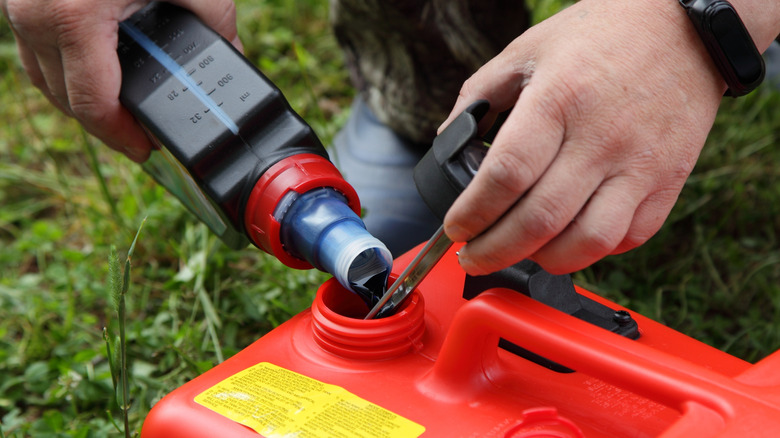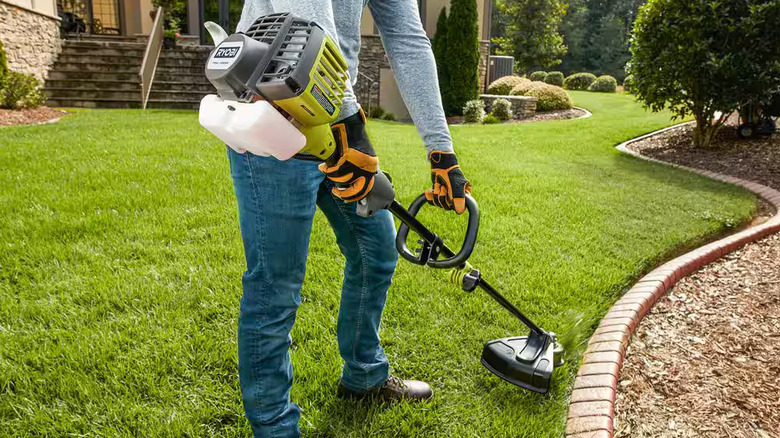What Should The Oil-To-Gas Ratio Be For Your Ryobi Gas-Powered Tools?
We may receive a commission on purchases made from links.
It might be most famous for its line of electric power tools, but Ryobi also offers some gas-powered tools in its sprawling range as well. The differences between the two motor types are broadly the same across the range, with Ryobi's gas and electric grass trimmers, for example, both being capable tools. However, the electric tool is cheaper and quieter, while the gas version remains the top choice for overall cutting power. Unlike their electric counterparts, Ryobi's gas-powered tools, like trimmers, chainsaws, and cultivators, require users to mix their fuel with lubricating oil to keep them running smoothly.
Across the range, Ryobi's two-stroke engines require a fuel and oil mix of 50:1, with 50 parts fuel to one part oil. The manual for every tool will list the correct fuel-to-oil ratio, so it's worth double-checking it before you start mixing. The manual should also have a table that lists the amount of oil you'll need for a range of fuel capacities, in case you want to ensure that your math is correct. Getting the right mixture is important, as an improper oil and gas mix might make the tool hard to start, or even not start at all. It also might produce an excess of blue smoke.
You should use the correct oil for your Ryobi tool
As well as using the correct amount of oil in your Ryobi tool's fuel and oil mixture, it's also important to make sure you're using the right oil. If you already have oil for a different two-stroke engine, like a boat or motorcycle engine, it might be tempting to use it for your gas-powered tools. However, the brand advises against using these types of oil, as they're formulated specifically for their intended uses and might not be as effective for a gas-powered outdoor tool. It's also important to use a fresh mix when refueling your Ryobi tool, as the fuel and oil mixture only has a shelf life of around one to two months.
If you have an older mixture, either in the tool's fuel tank or in a storage can, you'll need to dispose of the fuel properly before mixing a fresh batch. You also want to avoid leaving old fuel in the tool after you've finished using it. To do this, Ryobi suggests emptying the tank, then leaving the engine running until the fuel lines are also clear.

